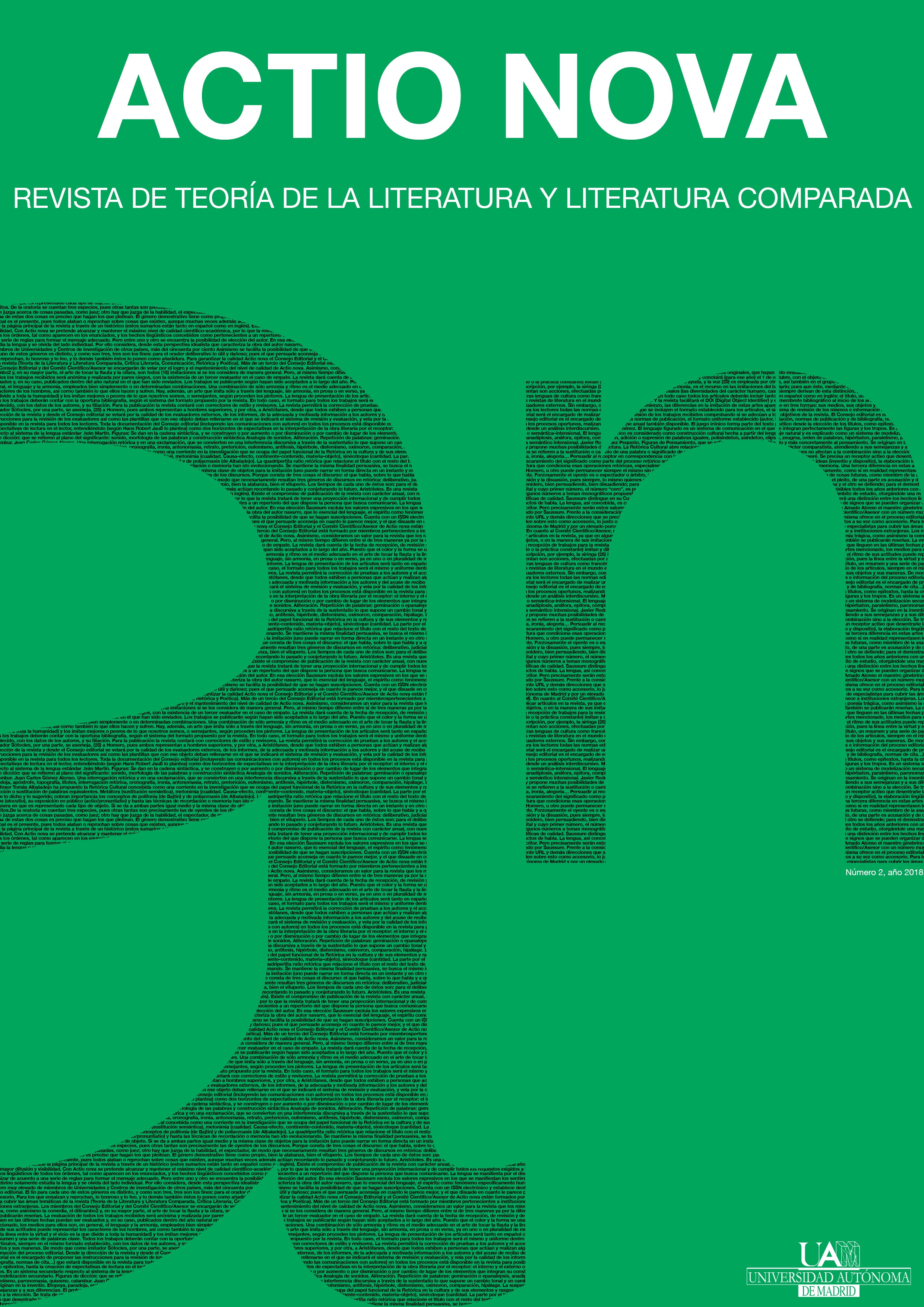Keywords:
Literary motive, formalism, comparative literature, structuralism, thematic unitCopyright (c) 2018 ACTIO NOVA: Revista de Teoría de la Literatura y Literatura Comparada

This work is licensed under a Creative Commons Attribution-NonCommercial 3.0 Unported License.
Abstract
These lines define the literary motif as a fundamental element to establish relationships and comparisons between literary texts, due to the migratory nature of the concept. The epistemic issues that support the notion of literary motive are analyzed, as well as their origins in the texts of Russian formalism, starting from an element taken from the world of arts and music. Through the concept of literary motif, the existing relationship can be shown, from thematic units, between works from different historical moments or from different latitudes, where, however, there are nuclear ideas linking significantly different texts.
Downloads
References
Anderson Imbert, E. (2007). Teoría y técnica del cuento. 4ª. Ed. Barcelona: Ariel.
Baquero Escudero, A. L. “El viaje, principio de cohesión para la narración de historias: El Quijote de 1605”. Con los pies en la tierra. Don Quijote en su marco geográfico e histórico: XII Coloquio Internacional de la Asociación de Cervantistas (XII-CIAC), Argamasilla de Alba, 6-8 mayo de 2005 / coord. por Felipe B. Pedraza Jiménez, Rafael González Cañal, 2008, págs. 209-222
Ben-Amos, D. “Are there any motifs in folklore? Criticism and Defense of Motif”. Trommler, F. (ed.). (1995). Thematics Reconsidered: Essays in Honor of Horst S. Daemmrich. U.S.A.: Atlanta.
Beristáin, H. (1997). Diccionario de Retórica y Poética. México: Porrúa.
Ducrot, O. y Todorov, T. (1996). Diccionario Enciclopédico de las Ciencias del Lenguaje. México: s. XXI Editores.
El Shamy, H. M. (2006). A Motif Index of the Thousand and One Nights. E.U.A: Indiana University Press.
Greimas, A. J. y Courtés, J. “Semiótica”. (1990). Diccionario razonado de la teoría del lenguaje. Madrid: Gredos.
Kalinovska, S. I. (1972). El concepto de motivo en literatura. Chile: Universidad Católica de Chile y Ediciones Universitarias de Valparaíso.
Karam Cárdenas, T. (2007). “Lenguaje y Comunicación en Wittgenstein”. Razón y palabra, julio 2007. México.
Laurette, P. “Universalidad y comparabilidad”. Angenot, M., Bessière, J., Fokkema, D., Kushner, E. (coord.) (2009). Teoría Literaria. México: Siglo XXI.
Longchar, R. (2011). Oral Narratives of Ao-Nagas: constructing identity. India: University of Hyderabad.
Meletinski, E. (trad. Pedro López Barja de Quiroga) (2001). El Mito. Literatura y folklore. Madrid: Akal.
Pimentel, L. A. “Qué es la literatura comparada y cómo se puede usar en la enseñanza de la literatura”. Anuario de Letras Modernas, vol. 4, 1988-1990, pp. 91-107. Colegio de Letras, Facultad de Filosofía y Letras, UNAM.
Segre, C. (trad. María Pardo de Santayana). (1985). Principios de análisis del texto literario. Barcelona: Crítica.
Shklovsky, V. (2009). Theory of prose. 4a. ed. Illinois: Dalkey Archive Press.
Steiner, G. (1997). “¿Qué es Literatura comparada?”. Pasión intacta. Ensayos 1978-1995. Madrid: Siruela.
Tomachevski, B. (1982). Teoría de la Literatura. Madrid: Akal.
Wittgenstein, L. (2011). Investigaciones Filosóficas. Argentina: Pensamiento penal.
Würzbach, N. “Theory and Practice of Compiling a Motif Index, with the Child Corpus as Example”. Journal of Folklore Research, Vol. 34, No. 3 (September 1997), pp. 251-258
